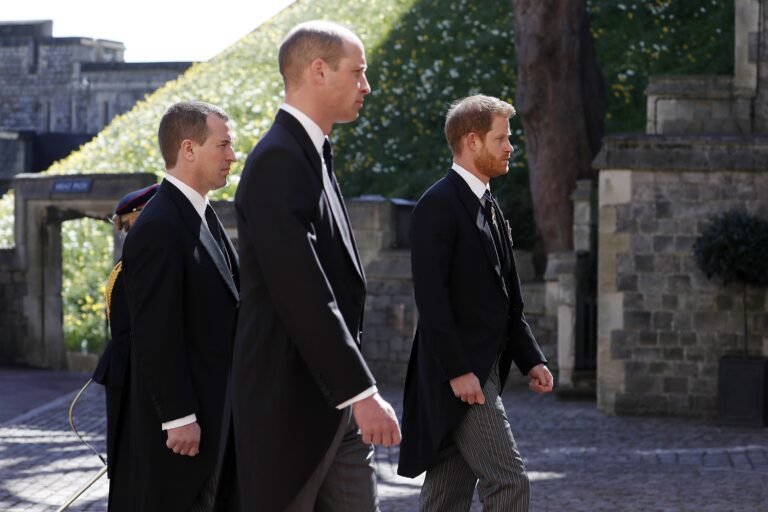The funeral of Prince Philip, Duke of Edinburgh, marked a poignant moment in the history of the British monarchy. It was not just a ceremonial farewell but also a deeply personal event for the royal family and a moment of national reflection. The event was held on April 17, 2021, amid the constraints imposed by the COVID-19 pandemic, which meant that the usual pomp and extensive guest list of a royal funeral had to be significantly scaled back.
Planning and Modifications Due to COVID-19
The original plans for Prince Philip’s funeral, known under the codename “Operation Forth Bridge,” were extensively modified to comply with the ongoing pandemic restrictions. The Duke of Edinburgh had a reputation for his no-fuss approach to life, and fittingly, his funeral reflected a degree of simplicity that he had specifically requested. Instead of a large public gathering, the ceremony was limited to only 30 attendees, which included close family members and a few personal aides.
Adjustments to Traditional Protocols
The funeral took place at St. George’s Chapel, Windsor Castle, and was preceded by a national minute’s silence. The ceremonial aspects of the day were scaled down, but several key elements were retained to honor the Duke’s military affiliations and personal contributions to the nation. The procession and service were broadcast live, allowing the public to partake in the mourning from their homes, thus adhering to social distancing guidelines.
The Royal Family’s Role
Prince Philip’s immediate family played significant roles during the funeral. Queen Elizabeth II, dressed in mourning black and wearing a face mask, was a figure of dignified sorrow, sitting alone in the chapel due to social distancing measures. This image became emblematic of the nation’s isolated grief in the time of a pandemic.
Prince Charles and Other Family Members
Prince Charles, the Prince of Wales, led the procession, visibly moved as he walked behind his father’s coffin, which was transported in a custom Land Rover hearse that Prince Philip had helped to design years prior. Other members of the royal family, including Princess Anne, Prince Andrew, Prince Edward, and Princes William and Harry, who had flown in from the United States, also took part in the procession, maintaining a respectful distance from each other.
Key Moments and Symbols
The ceremony was rich with symbolism and carefully chosen elements that reflected Prince Philip’s life and legacy. His coffin was draped in his personal standard and topped with his naval cap and sword, a nod to his decorated naval career. The funeral service itself included hymns and readings that had personal significance to the Duke, as well as a bugle call of “The Last Post,” followed by “Action Stations,” signaling his naval service’s conclusion.
Reflections on Prince Philip’s Contributions
Beyond his role as the consort to the Queen, Prince Philip was deeply involved in various sectors of British life, from his pioneering of the Duke of Edinburgh Award scheme to his early advocacy for environmental conservation. His funeral provided a moment to reflect on these contributions, reminding the public and the world of his nearly seven decades of public service.
Media Coverage and Public Reaction
The funeral was covered extensively by media outlets around the world, highlighting its significance not only to the United Kingdom but globally. While the public could not participate in person due to the pandemic, many people found ways to pay their respects, laying flowers and messages at the gates of Windsor Castle and other royal residences.
Impact on the Nation
Prince Philip’s funeral, while a private affair, had a profound impact on the nation. It allowed many to reflect on the meaning of service and duty, themes that the Duke had embodied throughout his life. The restrained and dignified manner of the funeral also spoke to a broader contemplation on grief and loss during a time when many families had experienced similar sorrows.
Conclusion
Prince Philip’s funeral was a historic event that combined personal mourning with public commemoration. It underscored the challenges posed by the pandemic but also demonstrated the resilience of traditions and the unifying power of collective remembrance. As the royal family and the nation said goodbye to a pivotal figure, the legacy of the Duke of Edinburgh’s commitment to the country, his unwavering support of the Queen, and his profound influence on the broader society were vividly remembered and celebrated.

